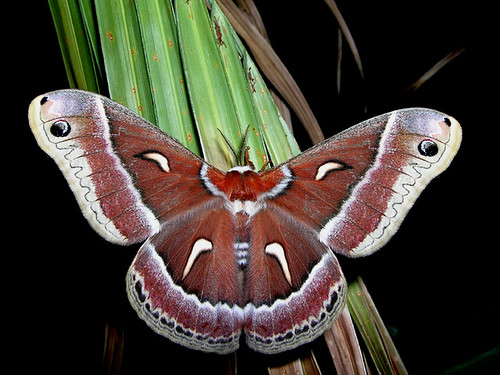
In the usual places, unusual things.
Sometimes the opposite is true, although I prefer this arrangement.
Nodding off is not the best way to end with best wishes for a sane week ahead, but I`m doing it anyway.
In the header, a setting sun, shot with a broken camera.
On Planet Earth, the mouth of the Green Bubble is larger than the fish.
Somewhere, in the set, a bleached coral. That white coral was a prized coral that I`ve grown for years & have watched over it & cared for it with pride & joy. On some of our reefs in the wilds, miles of coral reefs are bleaching like this. Global warming will make it ever worse.




10 comments:
How kind of the butterfly to hold so still and let you take such a gorgeous shot.
As for the Planet Earth set -- wowie zowie!
It really does look like a fur coat. I hope nobody from PETA is around this morning. ;)
Good morning Andif,
Although it`s a moth, the appreciation of it from you, is not lessened.
Thanks.
Nancy p,
It`s not fur nothing I took the shot at night.
Even though I don`t PET A lot, I wanted to stroke this one.
l'm aware of the danger facing the great coral reefs worldwide; but to what do you ascribe the death of your prize coral?
as it seems to me, evident, that you tend to your tanks and their inhabitants with a great deal of care. surely the recent move couldn't have caused it in such a short amount of time...?
the moth is spectacular, and the sunset with a broken camera looks pretty good too.
later
peace
dada,
The bleaching of corals can indeed happen that fast.
Just the stress of a temperature drop in a sudden manner can trigger it. Once it starts there`s almost a 100% fatality rate. These corals are the hardest to keep & I had high hopes I could make the move with minimal loss, but that one would have been the one to go if any. All my other corals are doing fine thankfully. This one I had grown from a very small patch (fingernail size) to the beautiful branching one of just a month ago.
I added a set of images called "PURPLE PLEASURE" to the collection linked to this post.
This is a link to bleaching on coral reefs. Scary
http://www.science.org.au/nova/076/076key.htm
Head, stupid question of the day (week/month/year) -- how can you tell whether something is a moth or a butterfly?
Andif, I tell by when I see them. Night = moth.
Day = butterfly.
Here are some others.
A butterfly flies by day, and a moth by night. There are some day flying moths and butterflies that fly at dusk.
A butterfly always has a feeding mechanism (proboscis), whereas a moth often does not. These moths simply do not eat as adults as they have done all their eating as larvae.
A butterfly rests with its wings closed and a moth lands with them open. A notable exception is the butterflies of the Hamadryas genus (Nymphaliinae) that always land with their wings laid flat.
A butterfly forms a chrysalis that hangs, and is always produced by a single butterfly and without silk. A moth forms a cocoon, usually on the ground and surrounded by silk.
The antennae of a butterfly are straight and club-like. The antennae of a moth vary greatly but are usually brush like with a great deal more surface area.
Moth shot is superb!
Bigmouths look like they'd do well in a hollywood horror flick... can't you imagine Harrison Ford getting swallowed by one of them.
(2nd attempt at comment today)
Thanks, Head, for all the good info.
Post a Comment